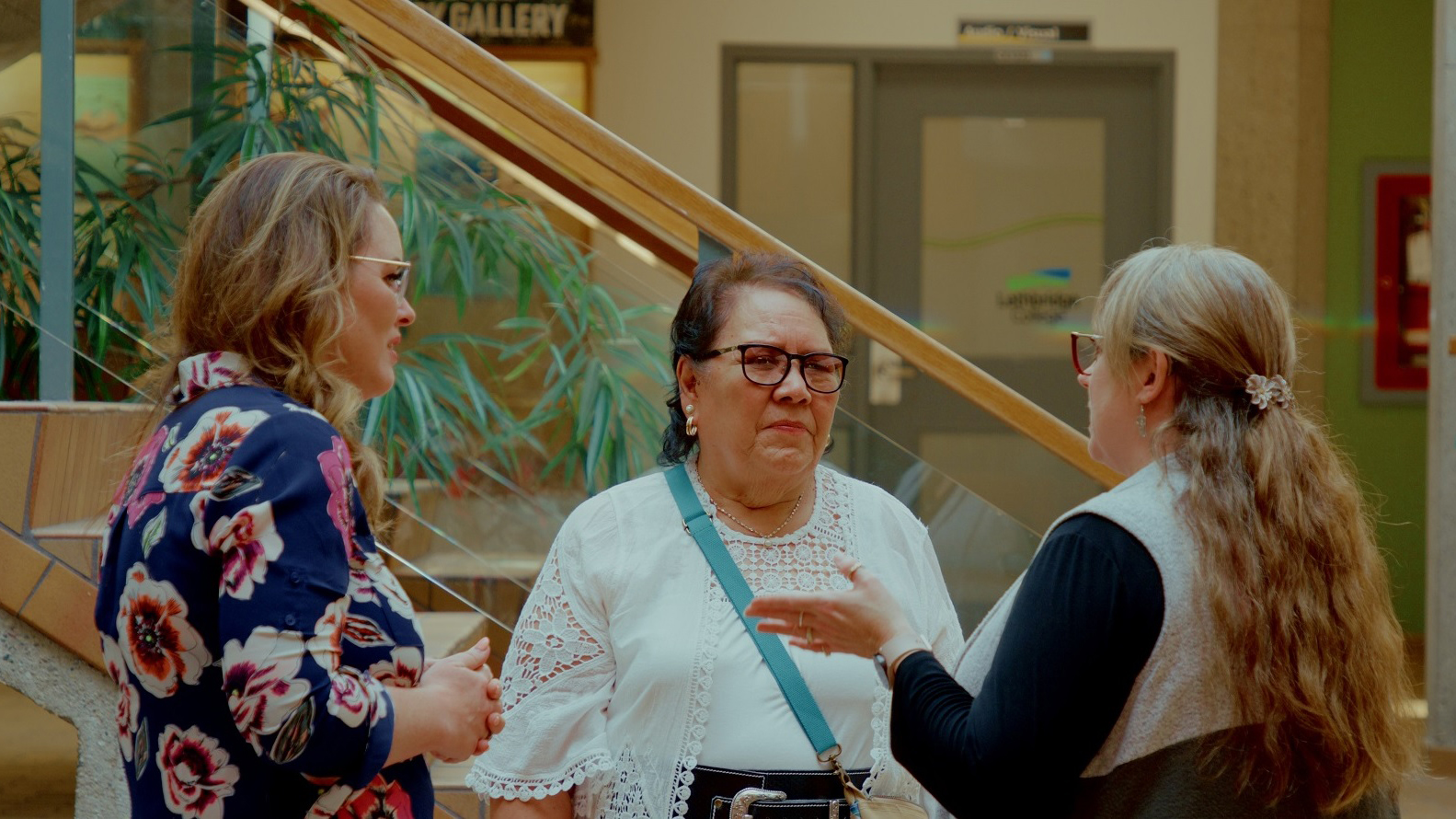
Lethbridge College will receive $120,000 per year over the next three years for a new research project that will use art and Blackfoot worldviews to support marginalized populations as they reintegrate into the community.
The grant, from the College and Community Social Innovation Fund, was recently announced by the Natural Sciences and Engineering Research Council of Canada and the Social Sciences Humanities Research Council of Canada. It’s the first time Lethbridge College has been a recipient of this federal fund.
The college’s Centre for Public Safety Applied Research (CPSAR), through a partnership with the Ninastako Cultural Centre, will design, implement and evaluate the Community Integration Through Art – Pissatsinaskssini (CITAP) program. With support from the grant, this program will host weekly meetings of a social recreational support group that will include creating art, sharing food, building relationships and learning about health and wellbeing in an environment guided by Blackfoot knowledge.
“The program will honour the Siksikaitsitapi (Blackfoot) people through a relationship that is respectful, relevant, reciprocal and responsible by using Indigenous ways of knowing and learning,” says Dr. Kirsten Fantazir, project director and president’s applied research chair, CPSAR. “We are honoured to be working closely with the Ninastako Cultural Centre and our local judiciary to develop and implement a program that will facilitate and support reconciliation within our community.”
Each CITAP meeting will involve a member of the research team, an artist or craftsperson, participants and at least one of the following: an Elder, a knowledge keeper, a health or wellness professional, or a service organization representative.
“Given our focus is on reviving and developing traditional and contemporary cultural skills, we feel this project and our reciprocal relationship with CPSAR will help us to realize our goals,” says Gloria Wells, executive director of the Ninastako Cultural Centre. “We are hopeful that this project will promote reconciliation in our area and strengthen the relationships between Indigenous and non-Indigenous peoples.”
The program will be open to anyone, of any race or ethnic background, who can benefit from support and resources as they reintegrate into the Lethbridge community.
“Blackfoot worldviews, language and arts will be infused throughout the program for all participants,” says Jami Albright-Tolman, Justice Studies instructor and CPSAR research associate. “We want to normalize the use of Blackfoot worldviews for everyone, rather than just for Indigenous peoples.”
The three-year project coincides with CPSAR’s goal of meeting partner needs by developing innovative solutions to current industry challenges.
“Research has shown that increasing community integration improves health and wellness and reduces the risk of criminal activity,” says Albright-Tolman. “Through the Community Integration Through Art – Pissatsinaskssini program, we hope to support and encourage the integration of marginalized people who feel they aren’t connected to the community in a meaningful way.”
Project evaluation will incorporate quantitative, qualitative and Indigenous research methods and analysis, and results will be interpreted by the CPSAR research team, the Ninastako Cultural Centre, collaborators and participants.